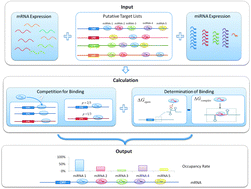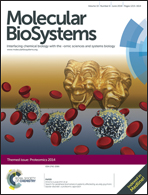MIROR: a method for cell-type specific microRNA occupancy rate prediction†
Abstract
MicroRNA (miRNA) regulation is highly cell-type specific. It is sensitive to both the miRNA–mRNA relative abundance and the competitive endogenous RNA (ceRNA) effect. However, almost all existing miRNA target prediction methods neglected the influence of the cellular environment when analyzing miRNA regulation effects. In this study, we proposed a method, MIROR (miRNA Occupancy Rate predictor), to predict miRNA regulation intensity in a given cell type. The major considerations were the miRNA–mRNA relative abundance and the endogenous competition between different mRNA species. The output of MIROR is the predicted miRNA occupancy rates of each target site. The predicted results significantly correlated with Ago HITS-CLIP experiment that indicated miRNA binding intensities. When applied to the analysis of the breast invasive carcinoma dataset, MIROR identified a number of differentially regulated miRNA–mRNA pairs with significant miRNA occupancy rate changes between tumor and normal tissues. Many of the predictions were supported by previous research studies, including the ones without a significant change in the mRNA expression level. These results indicate that MIROR provides a novel strategy to study the miRNA differential regulation in different cell types.


 Please wait while we load your content...
Please wait while we load your content...